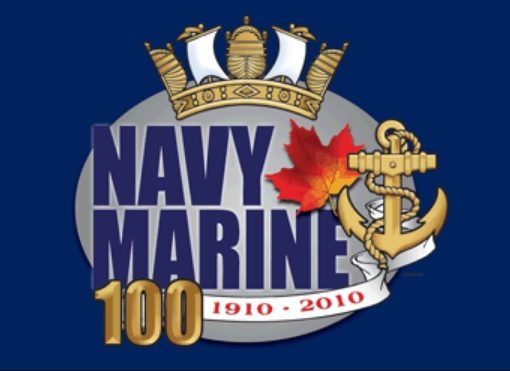One of my favourite definitions about the meaning of military transformation comes from General Peter J. Schoomaker, Chief of Staff of the U.S. Army from 01 August 2003 to 10 April 2007. This is how he defined transformation in a speech made on 11 April 2005:
“Transformation is a journey. It is not a destination. And transformation is not synonymous with modernization. It is not only done in the material dimension of the process. It involves doctrine. It involves organization. It involves training. It involves the way we develop our leaders. It involves the way we structure our installations; the way we train, equip, and raise our soldiers; and how we treat our families.”
General Leslie’s report is a pale imitation of the real thing, if General Schoomaker’s definition is used as the ‘gold standard’. (You can view the Leslie report here.) By far the biggest issue in the report is the number of headquarters that exist in the Canadian military structure. General Hillier, who also viewed himself as a transformational leader, restructured the CF as a way of creating a more operational approach to domestic and foreign military missions. Four new commands and headquarters resulted (Canada, Expeditionary, Special Forces and Operational Support), all of which carried a heavy personnel bill and which also took away responsibility for operations from traditional force employers, like the navy.
An even heavier burden from General Hillier’s transformation came with the creation of the regional joint task force headquarters within Canada Command. Six sub-commands and headquarters were created (Atlantic, Central, East, North, Pacific, and West). In theory, all of them are joint and require staffing by all of the branches of the service. The personnel bill for all of these headquarter staffs was especially heavy, but General Hillier insisted that the transformation effort hung in the balance. At the time, few critics felt that the structure would outlast his tenure by many years, and now it appears they were right.
General Hillier is overstating his case by claiming that dismantling some or all of these headquarters “will kill the Canadian Forces.” Depending on your point of view, the number of headquarters is actually what is having that effect, which is the main point that General Leslie pursues in his report. When the discussions were first going around about the Hillier transformation agenda, the navy, which has the smallest manpower base (about 14 percent of the total uniformed strength), not surprisingly advocated for the smallest number of joint regional headquarters; two (east and west) or three (east, west and north) if absolutely required. The army wanted the most headquarters, six, which conformed most closely with their existing army regional structure. The air force was in the middle. The army (General Hillier) won the argument even though it was known with certainty that no service had the number of experienced and qualified people to man such a massive joint force command structure. This is where it really gets interesting.
The Canadian military has been a very tactical organization since its inception. Getting tactical units into service has been viewed as the most important institutional goal since the Boer War. The kinds of institutions and capabilities needed to turn the Canadian military into an advanced force have only been identified since The Report of the Officer Development Board, chaired by MGen. Roger Rowley in the late 1960’s, and not much was accomplished about it until the mid-1990’s. (Read more about it and about a book on the subject here.) In my view, not enough has been done yet because the attitude of most officers is to stay close to the waterfront/battalion/cockpit (take your pick) so as to avoid losing their tactical ‘edge’. Changing the culture of an organization is a notoriously hard thing to do.
The culture of the CF still espouses superlative tactical competency as the ultimate measure of accomplishment for promotion, even though General Rowley’s report shows it to be of diminishing relevance above mid-rank levels. This is even seen in General Hillier’s claim to being ‘A Soldier First’, which is actually a contradiction of his primary responsibility to be a leader and manager of the institution. So, not surprisingly, the goal of every transformation in Canada has been to preserve tactical-level ‘tooth’ and cut everything else that falls under the category of ‘tail’. It is viewed as a form of loyalty to the troops, with whom the leaders identify so closely.
Chopping headquarters is an absolute necessity, unless the size of the CF is going to grow by 25 percent and a lot more effort is going to be put into advanced education. As neither of these things is going to happen, chopping of at least some headquarters will occur. The problem with this is that it will be used as an excuse to preserve tactical ‘tooth’ and conventional tactical organizations. That is the complete antithesis of real transformation.
In his farewell address in 2007, General Schoomaker continued to emphasize the importance of institutional learning and profound organizational change. He felt that the U.S. Army was making real progress on those accounts: “Intellectual and cultural transformation is creating and maintaining a learning and adaptive force that will dramatically improve how we face future challenges.” To be fair, he had also orchestrated an expansion of the U.S. Army, growing the ‘regular’ component by 30,000, and obtaining authority to permanently increase the total strength by over 74,000 (Active, National Guard, and Army Reserve). That kind of growth was bound to keep even the most strident ‘traditonalists’ happy. However, the basic structure (the division) had been displaced by a variety of brigades as the ‘building blocks’ of a new army. More profound changes permeated the entirety of the institution, all of which were directed at affecting the culture of the U.S. Army.
General Hillier was exposed to the transformative efforts of General Schoomaker’s changes, but he only emulated the superficial organizational effects and did not attempt the more profound measures that would have affected the tactical culture of the CF. The problem is that, without them, his structural attempt at transformation was bound to fail. With a government that seems to only care about saving money, it is highly unlikely that this round of tinkering will do much about it either.



